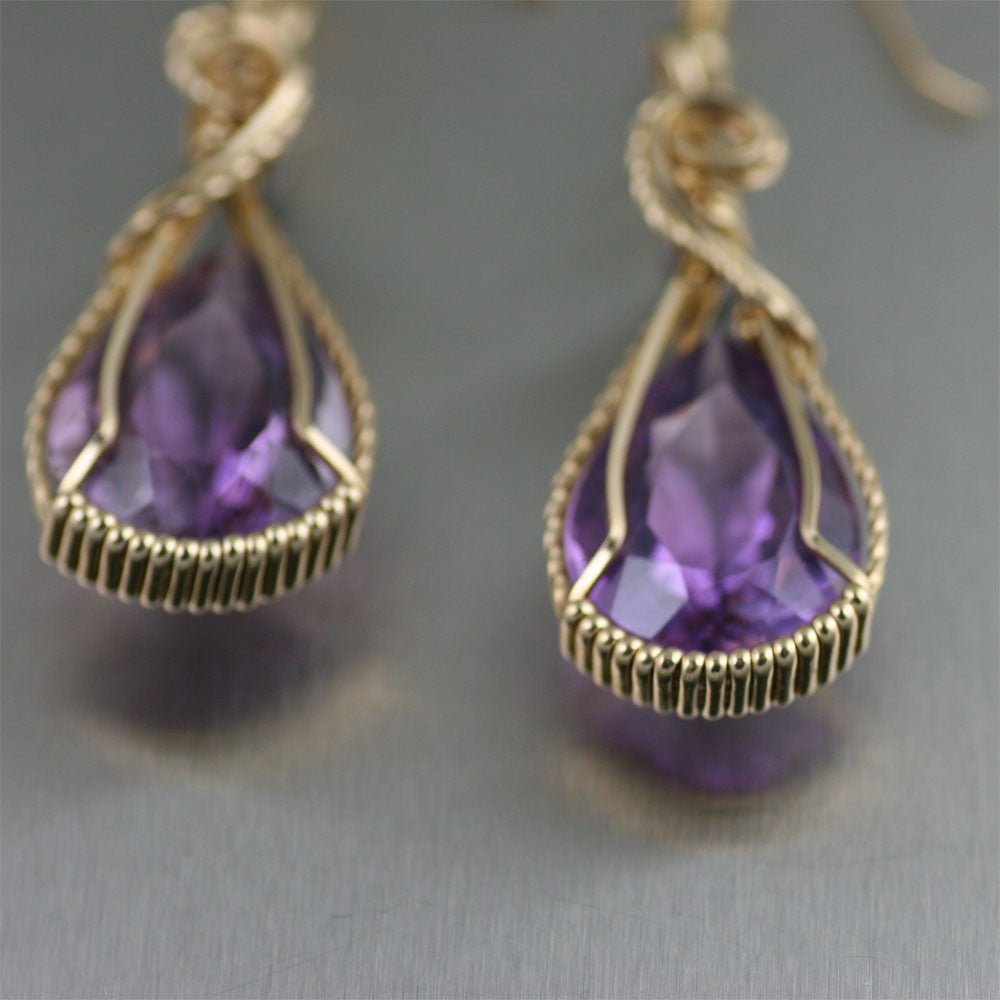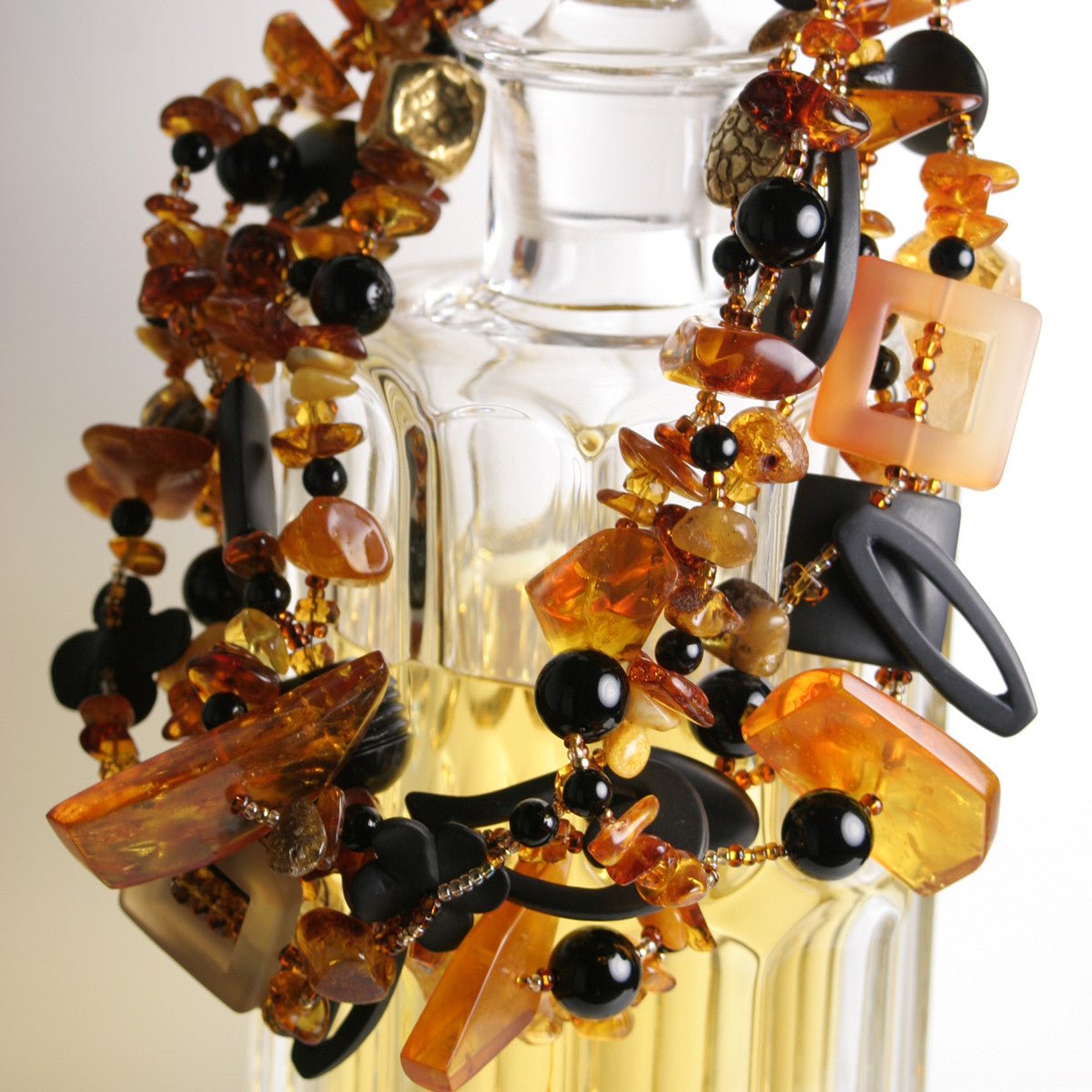Amethyst - February's Birthstone

Featuring faceted Amethyst, Purple Freshwater Pearls, Cranberry Freshwater Pearls, Rose Quartz, and accented by Vermeil beads, I recently added this necklace to the Barbary Coast Collection.
Amethyst was used as a gemstone by the ancient Egyptians and was largely employed in antiquity for intaglios (cameos). Beads of Amethyst are found in Anglo-Saxon graves in England. It is a widely distributed mineral, but fine, clear specimens that are suitable for cutting as ornamental stones are confined to comparatively few localities. Such crystals occur either in the cavities of mineral-veins and in granitic rocks, or as a lining in agate geodes. A huge geode, or "Amethyst-grotto", from near Santa Cruz in southern Brazil was exhibited at the Düsseldorf Exhibition of 1902. Many of the hollow agates of Brazil and Uruguay contain a crop of Amethyst crystals in the interior. Much fine Amethyst comes from Russia, especially from near Mursinka in the Ekaterinburg district, where it occurs in drusy cavities in granitic rocks. Many localities in India yield Amethyst; and it is found also in Sri Lanka, chiefly as pebbles.
Usually Purple to Lavender, several descriptive terms have been coined in the gem trade to describe the varying colors of Amethyst. "Rose de France" is usually a pale pinkish lavender or lilac shade (usually the least sought color). The most prized color is an intense violet with red flashes and is called "Siberian", although gems of this color may occur from several locations other than Siberia, notably Uruguay and Zambia. In more recent times, certain gems (usually of Bolivian origin) that have shown alternate bands of Amethyst purple with Citrine orange have been given the name Ametrine. Purple Corundum, or Sapphire of Amethystine tint, is called Oriental Amethyst, but this expression is often applied by jewelers to fine examples of the ordinary Amethystine quartz, even when not derived from eastern sources. Professional gemological associations, such as the Gemological Institute of America (GIA) or the American Gemological Society (AGS), discourage the use of the term "Oriental Amethyst" to describe any gem, as it may be misleading.
John Brana
Author
John S Brana, based in San Francisco, is the founder of John S Brana Handmade Jewelry and President of Galleria NuVo, Inc. with over two decades of expertise in crafting distinctive handcrafted pieces. Transitioning from a finance and banking career in 2004, John manages everything from design to marketing. His modern, urban-inspired creations have graced fashion editorials, resonating with stylish, adventurous enthusiasts who value exquisite craftsmanship and luxury. Every piece narrates a distinct tale, mirroring the wearer's individuality.
Also in Gemstone Jewelry Blog
Unveiling the Mystique of Moonstone: History, Geology, and Spiritual Significance
Recent Articles
-
Fine Gemstone Jewelry Throughout the Year
Published date:September 22, 2023
-
June Birthstones: The Allure of Pearls and Moonstones
Published date:June 05, 2023
-
Unveiling the Mystique of Moonstone: History, Geology, and Spiritual Significance
Published date:June 01, 2023
-
The Aquamarine: A Gemstone of Serenity and Courage
Published date:July 22, 2022
-
Your Guide to the Blue Topaz Gemstone
Published date:November 21, 2018
-
Jewelry Must-Have: A Gem-Drenched Necklace
Published date:December 15, 2015
-
Peridot – August’s Birthstone
Published date:August 01, 2014
-
Amber Citrine Crystal Quartz Beaded Gemstone Necklace
Published date:March 10, 2014
-
Amazonite Gemstone Jewelry
Published date:February 18, 2014
-
Blue Chalcedony White Coral Necklace
Published date:February 13, 2014




